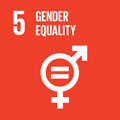- Docente: Andrea Bacchi
- Credits: 12
- SSD: L-ART/03
- Language: Italian
- Moduli: Andrea Bacchi (Modulo 1) Leonardo Regano (Modulo 2)
- Teaching Mode: In-person learning (entirely or partially) (Modulo 1); In-person learning (entirely or partially) (Modulo 2)
- Campus: Bologna
-
Corso:
First cycle degree programme (L) in
Humanities (cod. 8850)
Also valid for First cycle degree programme (L) in History (cod. 0962)
First cycle degree programme (L) in Philosophy (cod. 9216)
Learning outcomes
At the end of the course the student acquires basic skills on history of art covering the period from the Enlightenment to the current art trends. Each year the students will attend lectures on different issues and problems.
Course contents
The course aims to provide an overall picture of the main European artistic events of the nineteenth century.
In particular, the following topics will be addressed
Neoclassical Art in Europe
Goya
Painting of the early nineteenth century in France: Ingres, Géricault, Delacroix
German painting: Nazarenes, Friedrich
Pre-Raphaelites
Courbet and realism around the middle of the nineteenth century
Manet and Impressionism
The artistic scene at the end of the nineteenth century
Readings/Bibliography
The program for non-attending students does not require any integration as the lack of attendance requires a greater commitment in individual work.
For students needing 12 CFU:
R.Rosenblum, H.W. Janson, L'arte dell'Ottocento, Roma, Palombi, 1986
Due a scelta fra i seguenti titoli:
Hugh Honour, Neoclassicismo, Torino, Einaudi, 1980
Antonio Pinelli, Nel segno di Giano. Passato e futuro nell'arte europea Tra Sette e Ottocento, Roma, Carocci, 2000.
Robert Rosenblum, Trasformazioni nell'arte. Iconografia e stile tra Neoclassicismo e Romanticismo, Roma, Carocci, 2002.
Francis Haskell, Le metamorfosi del gusto. Studi su arte e pubblico nel XVIII e XIX secolo, Torino, Bollati Boringhieri, 1989.
Matthew Kraske, Art in Europe 1700-1830, Oxford, Oxford University Press, 1997.
Hugh Honour, Il Romanticismo, Torino, Einaudi, 2007.
Stefano Susinno, L'Ottocento a Roma. Artisti, cantieri, atelier tra età napoleonica e Restaurazione, Milano, Silvana Editoriale, 2009.
Linda Nochlin, Il realismo nella pittura europea del XIX secolo, Torino, Einaudi, 2003.
Meyer Schapiro, L'impressionismo. Riflessi e percezioni, Torino, Einaudi, 2008.
T.J.Clark, The Painting of Modern Life. Paris in the Art of Manet and His Followers, Princeton, Princeton University Press, 1999.
Anne Wagner, Jean Baptiste Carpeaux Sculptor of the Second Empire, New Haven-London, Yale University Press, 1986.
Kirk Varnedoe, Una squisita indifferenza: perche l'arte moderna è moderna, Milano, Leonardo, 1990.
For students needing 6 CFU
R.Rosenblum, H.W.Janson, L'arte dell'Ottocento, Roma, Palombi, 1986, parti I e II, pp. 1-203
Uno a scelta fra i seguenti titoli:
Hugh Honour, Neoclassicismo, Torino, Einaudi, 1980
Antonio Pinelli, Nel segno di Giano. Passato e futuro nell'arte europea Tra Sette e Ottocento, Roma, Carocci, 2000.
Robert Rosenblum, Trasformazioni nell'arte. Iconografia e stile tra Neoclassicismo e Romanticismo, Roma, Carocci, 2002.
Francis Haskell, Le metamorfosi del gusto. Studi su arte e pubblico nel XVIII e XIX secolo, Torino, Bollati Boringhieri, 1989.
Matthew Kraske, Art in Europe 1700-1830, Oxford, Oxford University Press, 1997.
Hugh Honour, Il Romanticismo, Torino, Einaudi, 2007.
Stefano Susinno, L'Ottocento a Roma. Artisti, cantieri, atelier tra età napoleonica e Restaurazione, Milano, Silvana Editoriale, 2009.
Teaching methods
Frontal lectures with the help of image projection.
Due to the restrictions imposed by the current health emergency, this teaching activity will be carried out in the following manner:
Traditional method: the teacher will always be present personally in the indicated classroom during this teaching activity. The students will alternate their presence, according to a schedule of shifts being defined (more detailed information regarding the shifts and about the modalities to get access to the classroom lessons will be provided soon). It will always be possible to connect remotely and to follow live lessons via the online platform TEAMS.
Assessment methods
The final examination consists of a first written part and a second oral part, which can be taken only if students pass the written part (the interview will be held on the same day as the written part).
The written part is based on the recognition of some of the images (usually 20 ca.) projected during the course (or extracted from the recommended bibliography), with questions related to the works. The images projected during the course are available on the site (http://campus.cib.unibo.it [http://campus.cib.unibo.it/] ). The time available is 45/60 minutes. Students who have passed the written part are expected to take a second oral part, which usually takes place on the same day of the written part. During the interview, they shall demonstrate their analysis capabilities of works and artistic movements.
It will be assessed as excellent the performance of those students achieving an organic vision of the course contents, the use of a proper specific language, originality of reflection and familiarity with the analysis tools of contemporary art. It will be assessed as discrete the performance of those students showing mostly mechanical or mnemonic knowledge of the subject, disarticulated synthesis and analysis capabilities, or a correct but not always appropriate language, as well as a scholastic study of contemporary art. It will be assessed as barely sufficient the performance of those students showing learning gaps, inappropriate language, lack of knowledge of the instruments of contemporary art. It will be assessed as insufficient the performance of those students showing learning gaps, inappropriate language, no orientation within the recommended bibliography and inability to analyze the contemporary art.
Teaching tools
Lectures supported by powerpoint projection
Office hours
See the website of Andrea Bacchi
See the website of Leonardo Regano
SDGs


This teaching activity contributes to the achievement of the Sustainable Development Goals of the UN 2030 Agenda.
